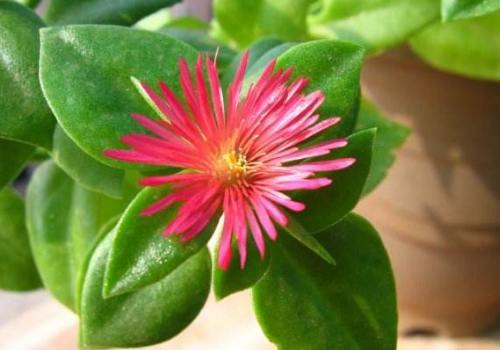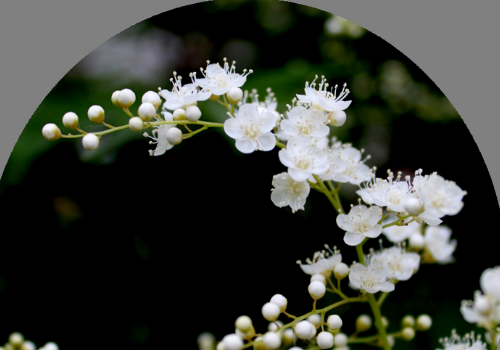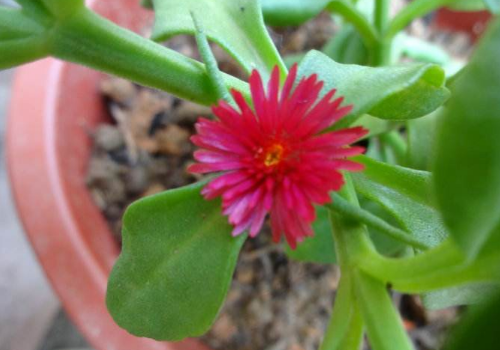How do peony orchids grow yellowing leaves in winter?
The peony orchid has to slowly reduce the amount of water from autumn, and it is basically unwatered or rarely watered in winter. How to raise peony orchid in winter? What's wrong with the yellowing of leaves:
How to raise peony orchids in winter:
1. Overwintering preparation
Before the arrival of winter, a typical change of the peony orchid is that it basically no longer grows, which means that it has entered the dormancy time, and it is necessary for flower friends to cut off some sick and insect-infested branches. then the dense superimposed branches are repaired, leaving a reasonable space for growth.
2. Overwintering maintenance
One of the most critical steps is "shearing". In addition to those cut before overwintering, you have to cut off the overgrown and thin branches after the cold winter. don't underestimate this operation, because it can increase the life span of the plant. 3. Overwintering management
Management from the growth habits of peony orchids is the primary prerequisite for safe overwintering. Therefore, the cold-resistant peony orchid needs to move to a warmer place when winter comes.

How the leaves of peony hanging orchid turn yellow:
1. Natural metabolism
If the peony orchid is raised for a long time, the leaves at the bottom will naturally wither and yellow. this is a very normal phenomenon. Flower friends need not worry, even if there are a lot of withered and yellow leaves at the bottom, it does not matter, as long as the top leaves are normal.
2. Intense sun exposure
If the peony orchid is exposed to the sun, the leaves will be yellow. If you keep it in the absence of light for a long time, the chlorophyll will decrease and the leaves will turn yellow.
3. Lack of fertilizer or excessive fertilization
Without turning the basin and changing the soil for a long time, the various nutrient elements contained in the basin soil have been exhausted, the three elements of nitrogen, phosphorus and potassium have not been replenished in time, the plant is lack of nutrients, and the leaves are yellow and thin. At this time, fertile loam and fertile water should be replaced in time.
Do you understand the knowledge about peony hanging orchid?
How to Cuttage Propagation of Peony Cymbidium how the leaves of Peony Cymbidium turn yellow
Peony Cymbidium is a common potted plant, and its breeding method is also very easy. It grows rose-red flowers, which set off its green leaves. Many people want to raise it to decorate their home environment, so how does it breed? In fact, the propagation of peony orchid is mainly by cutting.
How to cuttage propagation of peony orchid 1, choose the branches above the more robust plants, cut off the healthy branches, 10cm or so.
2, prepare basin soil, generally choose mixed soil, peat soil with perlite, pebbles and so on can be mixed, you can also add some organic fertilizer. Cut the branches and pay attention to watering thoroughly.
3, after cutting, put it in a cool and ventilated place, often spray water, generally 2 weeks can take root. After it grows new buds, it can be moved to a place with plenty of light.
How do the leaves of peony hanging orchid turn yellow?
1. Natural metabolism
If the peony orchid is raised for a long time, the leaves at the bottom will naturally wither and yellow. this is a very normal phenomenon. Flower friends need not worry, even if there are a lot of withered and yellow leaves at the bottom, it does not matter, as long as the top leaves are normal.
2. Intense sun exposure
If the peony orchid is exposed to the sun, the leaves will be yellow. If you keep it in the absence of light for a long time, the chlorophyll will decrease and the leaves will turn yellow.
3. Lack of fertilizer or excessive fertilization
Without turning the basin and changing the soil for a long time, the various nutrient elements contained in the basin soil have been exhausted, the three elements of nitrogen, phosphorus and potassium have not been replenished in time, the plant is lack of nutrients, and the leaves are yellow and thin. At this time, fertile loam and fertile water should be replaced in time.
Excessive fertilization is easier to judge, mainly depends on whether the fertilizer has been applied recently, if the fertilizer exceeds the requirement of the plant, there will be uneven leaves, rotten roots, yellow leaves, should stop fertilization, irrigate more water, or turn the basin to clean the roots. replace the new soil.
4. Stagnant water
Some flower friends' peony hanging orchid pot soil has poor air permeability and frequent watering, which leads to long-term stagnant water in the basin soil, difficulty in root respiration, and yellowing of leaves, so it is necessary to loosen the soil and control moisture in time.
How to raise peony orchid in winter
1. Overwintering preparation
Before the arrival of winter, a typical change of the peony orchid is that it basically no longer grows, which means that it has entered the dormancy time, and it is necessary for flower friends to cut off some sick and insect-infested branches. then the dense superimposed branches are repaired, leaving a reasonable space for growth.
2. Overwintering maintenance
One of the most critical steps is "shearing". In addition to those cut before overwintering, you have to cut off the overgrown and thin branches after the cold winter. don't underestimate this operation, because it can increase the life span of the plant. 3. Overwintering management
Management from the growth habits of peony orchids is the primary prerequisite for safe overwintering. Therefore, the cold-resistant peony orchid needs to move to a warmer place when winter comes.
Second, this plant also needs plenty of light. This helps to prevent the plant from getting sick in winter and plays an important role in growing more luxuriantly in the second year. It grows slowly in the cold winter and does not need too much water supply. The amount of water should be reduced slowly from the beginning of autumn, and there is basically no watering or very little watering in winter.
How to eat peony orchid
Step 1: clean the stems and leaves of fresh peony orchids and cut them with a knife.
The second step: add water to the pot, heat until bubbling and tumbling, pour the cut peony orchid into it and stir it slightly to control the dry water.
Step 3: peel and wash the garlic and add a little salt to mash the garlic, ready to mix the sauce.
Step 4: take a small clean bowl (plate), pour in a little soy sauce and vinegar, add a little refined salt, and stir properly as a seasoning sauce.
Step 5: pour the mixed juice into the container where the peony orchid is placed.
Step 6: dig in mashed garlic and mix well. Mix the juice with the leaves of peony orchid.
Seventh: add oil and sprinkle chili peppers according to your taste.
Although the peony orchid is very easy to feed, but the cold winter still needs a certain degree of viability for it. Pruning, lighting and watering are the three contents that need to be paid special attention to in overwintering, as mentioned above. If you do a good job in these protective measures, the peony orchid will certainly be beautiful in the coming year!
How to raise peony orchid in winter the reason why peony orchid does not blossom
Peony orchid is an evergreen green plant, will blossom, flowers are generally fuchsia, very dazzling. Peony orchids can also grow and reproduce in winter. However, in the winter maintenance, there will be some changes in the maintenance methods, so it still takes some skills to keep it safe through the winter.
How to raise peony orchid in winter
1. Prepare for overwintering. Before the arrival of winter, a typical change of the peony orchid is that it basically no longer grows, which means that it has entered the dormancy time, and it is necessary for flower friends to cut off some sick and insect-infested branches. then the dense superimposed branches are repaired, leaving a reasonable space for growth.
2. overwintering maintenance. One of the most critical steps is "shearing". In addition to those cut before overwintering, you have to cut off the overgrown and thin branches after the cold winter. don't underestimate this operation, because it can increase the life span of the plant.
3. Overwintering management. Management from the growth habits of peony orchids is the primary prerequisite for safe overwintering. Therefore, the cold-resistant peony orchid needs to move to a warmer place when winter comes. Second, in daily management, although it is cultivated indoors, but because in winter, this plant also needs plenty of light. This helps to prevent the plant from getting sick in winter and plays an important role in growing more luxuriantly in the second year. This kind of flower, like other hibernating plants in winter, grows slowly in the cold winter and does not need much water supply. The amount of water should be reduced slowly from the beginning of autumn, and there is basically no watering or very little watering in winter. The focus of the winter conservation of this plant is the trimming, lighting, and watering mentioned above. If you do a good job of overwintering maintenance, the peony orchid will give back to the flower friends a remarkable bonsai in the coming year.
The reason for the non-flowering of Peony Cymbidium
1. Watering is too frequent. If watering too frequently, plants will absorb a large number of nitrogen and phosphorus elements which are beneficial to the growth of stems and leaves, while potassium fertilizer is difficult to be absorbed in water, which leads to the situation that peony orchids only grow leaves but do not blossom.
2. Lack of light, if lack of light, may also cause peony orchid can not blossom.
How to raise peony orchid to blossom
1. Lighting control. Peony orchids are more sunny plants, want to bloom more, but also to give sufficient light, at least more than 6 hours of light every day, the most suitable for growing in the south or west windowsill, winter can be seen through the windowsill. (proper shade is needed in summer)
2. Pay attention to watering. The peony hanging orchid likes the warm and moist environment, the water demand is also quite high, of course, it is necessary to reduce watering appropriately in winter. Keep the basin soil moist in summer, as long as the basin soil does not accumulate water. After cooling in autumn, we began to reduce the watering frequency and keep the soil slightly dry. If your peony orchid leaves are particularly luxuriant, but there are no flowers, it is necessary to properly control the water, let the pot soil dry for a while, in order to give birth to buds.
3. The skill of fertilizing. Peony hanging orchid likes thin fertilizer, thin fertilizer can make the plant more robust, combined with proper pinching, can make it grow luxuriantly, more conducive to the gestation of buds. Generally more fertilizer is applied in spring and autumn, but not in winter. Thin fertilizer can be given twice a month in spring and autumn. Ordinary compound fertilizer or rotten cake fertilizer is OK. If you want to blossom more easily, you can water potassium dihydrogen phosphate once a month to promote the gestation of more buds.
4. Soil and basin change. Peony hanging orchid likes loose humus soil, choose the mixture of rotten leaf soil, garden soil and river sand, or directly use peat soil with perlite, its root system is fleshy, so drainage must be guaranteed.
Causes of yellowing of peony orchid leaves and its countermeasures
1, strong sun, or no light for a long time, if the peony orchid is exposed to the sun, the leaves will be yellow. If it is maintained without light for a long time, the chlorophyll will be reduced and the leaves will turn yellow.
2. The peony orchids of some flower friends who are short of fertilizer or excessive fertilization have been raised for a long time, but they have not turned the pot to change the soil for a long time, the various nutrients contained in the basin soil have been exhausted, the three elements of nitrogen, phosphorus and potassium have not been replenished in time, the plants are lack of nutrients, and the leaves are yellow and thin. At this time, fertile loam and fertile water should be replaced in time. Excessive fertilization is easier to judge, mainly depends on whether the fertilizer has been applied recently, if the fertilizer exceeds the requirement of the plant, there will be uneven leaves, rotten roots, yellow leaves, should stop fertilization, irrigate more water, or turn the basin to clean the roots. replace the new soil.
3. Stagnant water. Some flower friends' peony hanging orchid pot soil has poor air permeability and frequent watering, which leads to long-term stagnant water in the basin soil, difficulty in root respiration, and yellowing of leaves, so it is necessary to loosen the soil and control moisture in time.
Peony orchid should be exposed to more sunlight in winter so that it can grow more healthily. Water should not be watered too much, otherwise it will cause root rot. If the peony orchid does not blossom, it is necessary to understand the reasons leading to the non-flowering, and then proceed to prevent and cure it.
- Prev

What if the leaves of Pearl Plum turn yellow? how to prune them?
In China, there is a tradition of loving, planting and tasting plum. They regard plum blossom as a symbol of integrity. What if the leaves of pearl plum turn yellow? How to prune: Pearl plum leaves yellow how to do: 1, pearl plum leaves yellow: humidity is too low in the process of breeding pearl plum, if the humidity is relatively low
- Next

What is the difference between peony hanging orchid root rot and Tianqi?
Tianqi is a very valuable medicinal material in China, which is somewhat similar to Peony Cymbidium in appearance. Peony hanging orchid rotten root how to do? What is the difference between and Tianqi: how to do the rotten roots of peony hanging orchid: the pruning of winter dormant period, entering winter, peony hanging orchid enters the dormant period, and the leaves no longer grow.
Related
- Fuxing push coffee new agricultural production and marketing class: lack of small-scale processing plants
- Jujube rice field leisure farm deep ploughing Yilan for five years to create a space for organic food and play
- Nongyu Farm-A trial of organic papaya for brave women with advanced technology
- Four points for attention in the prevention and control of diseases and insect pests of edible fungi
- How to add nutrient solution to Edible Fungi
- Is there any good way to control edible fungus mites?
- Open Inoculation Technology of Edible Fungi
- Is there any clever way to use fertilizer for edible fungus in winter?
- What agents are used to kill the pathogens of edible fungi in the mushroom shed?
- Rapid drying of Edible Fungi

